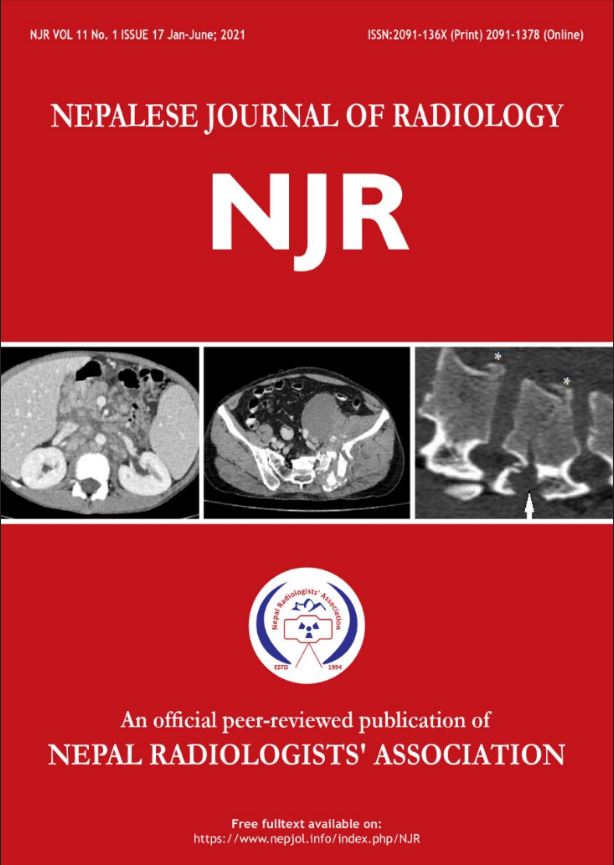The Hot Cross Bun Sign- A Case Series
DOI:
https://doi.org/10.3126/njr.v11i1.37172Keywords:
Multiple system atrophy, Synucleinopathies, Neuroimaging, Parkinson's disease, Cerebellar ataxiaAbstract
Multiple system atrophy (MSA) is an adult onset, sporadic, progressive neurodegenerative disorder. It is an alpha synucleinopathy and the presentations include parkinsonism, cerebellar ataxia and autonomic symptoms in varying combinations. The two clinical phenotypes recognized are parkinsonian variant (MSA-P) and the cerebellar variant (MSA-C). Since many of the clinical features overlap with Parkninson’s disease, it is often misdiagnosed as Parkinson’s disease in the early stages. Since MSA is a progressive disorder with poor prognosis, it is important for the treating physician to recognize this entity and provide prognostication. MRI brain may help in differentiating between these two and an important radiological sign in MSA-c is the ‘Hot cross bun’ sign. It refers to the cruciform T2 hyperintense signal on axial magnetic resonance imaging (MRI) of the pons. We hereby report two patients who presented with progressive slowness in waking, ataxia, pyramidal signs and orthostatic hypotension, whose MRI brain showed the characteristic hot cross bun sign.
Downloads
Downloads
Published
How to Cite
Issue
Section
License
Copyright (c) 2021 Nepalese Journal of Radiology

This work is licensed under a Creative Commons Attribution 4.0 International License.
This license enables reusers to distribute, remix, adapt, and build upon the material in any medium or format, so long as attribution is given to the creator. The license allows for commercial use.




